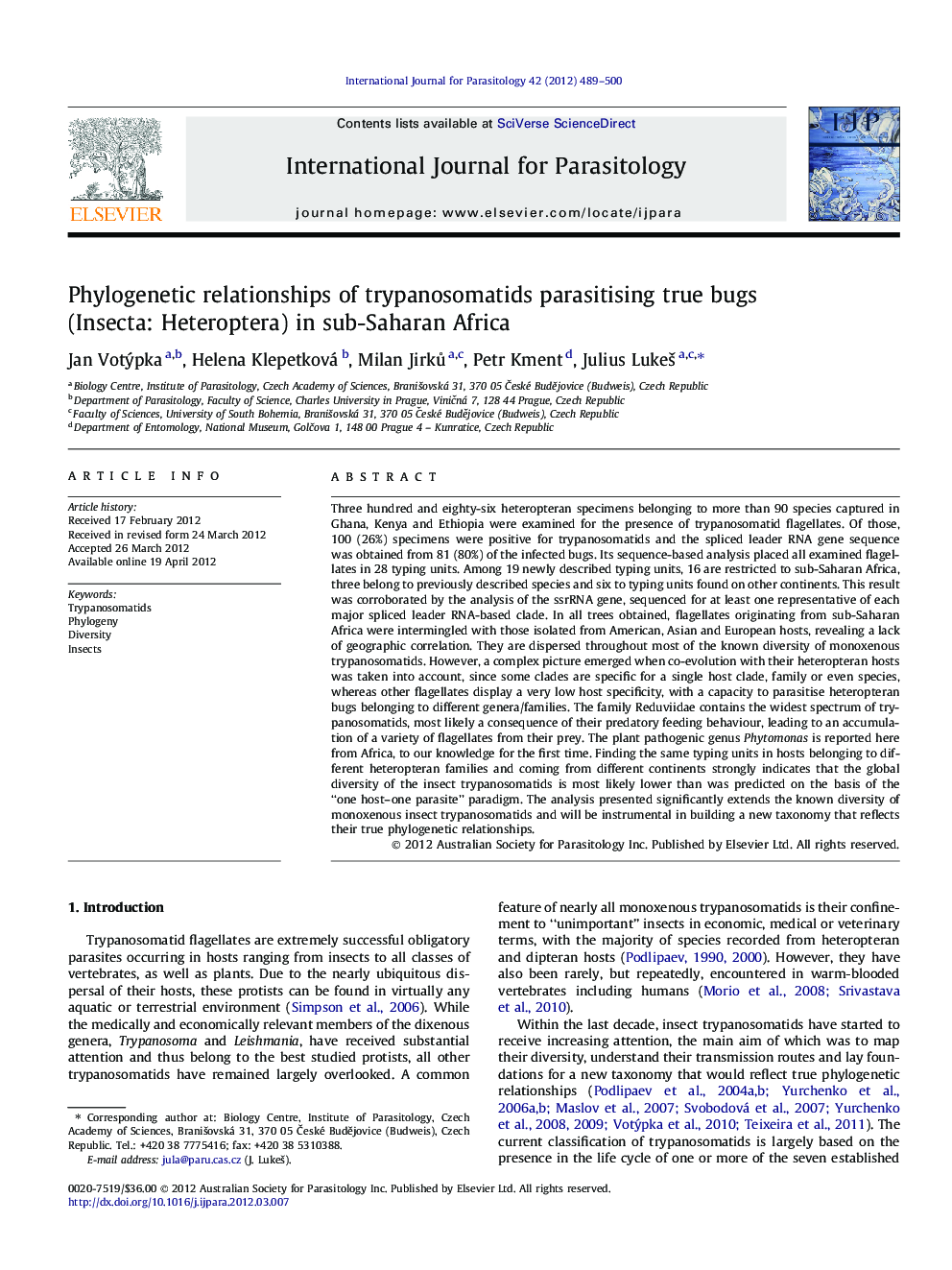| کد مقاله | کد نشریه | سال انتشار | مقاله انگلیسی | نسخه تمام متن |
|---|---|---|---|---|
| 2436148 | 1107279 | 2012 | 12 صفحه PDF | دانلود رایگان |

Three hundred and eighty-six heteropteran specimens belonging to more than 90 species captured in Ghana, Kenya and Ethiopia were examined for the presence of trypanosomatid flagellates. Of those, 100 (26%) specimens were positive for trypanosomatids and the spliced leader RNA gene sequence was obtained from 81 (80%) of the infected bugs. Its sequence-based analysis placed all examined flagellates in 28 typing units. Among 19 newly described typing units, 16 are restricted to sub-Saharan Africa, three belong to previously described species and six to typing units found on other continents. This result was corroborated by the analysis of the ssrRNA gene, sequenced for at least one representative of each major spliced leader RNA-based clade. In all trees obtained, flagellates originating from sub-Saharan Africa were intermingled with those isolated from American, Asian and European hosts, revealing a lack of geographic correlation. They are dispersed throughout most of the known diversity of monoxenous trypanosomatids. However, a complex picture emerged when co-evolution with their heteropteran hosts was taken into account, since some clades are specific for a single host clade, family or even species, whereas other flagellates display a very low host specificity, with a capacity to parasitise heteropteran bugs belonging to different genera/families. The family Reduviidae contains the widest spectrum of trypanosomatids, most likely a consequence of their predatory feeding behaviour, leading to an accumulation of a variety of flagellates from their prey. The plant pathogenic genus Phytomonas is reported here from Africa, to our knowledge for the first time. Finding the same typing units in hosts belonging to different heteropteran families and coming from different continents strongly indicates that the global diversity of the insect trypanosomatids is most likely lower than was predicted on the basis of the “one host–one parasite” paradigm. The analysis presented significantly extends the known diversity of monoxenous insect trypanosomatids and will be instrumental in building a new taxonomy that reflects their true phylogenetic relationships.
Figure optionsDownload high-quality image (81 K)Download as PowerPoint slideHighlights
► African hemipterids were examined for trypanosomatid flagellates.
► Numerous new typing units of monoxenous trypanosomatids have been detected.
► There is a lack of geographic correlation and phylogeny, and low host specificity.
► Our study strongly indicates that the global diversity of insect trypanosomatids is lower than predicted.
Journal: International Journal for Parasitology - Volume 42, Issue 5, 1 May 2012, Pages 489–500